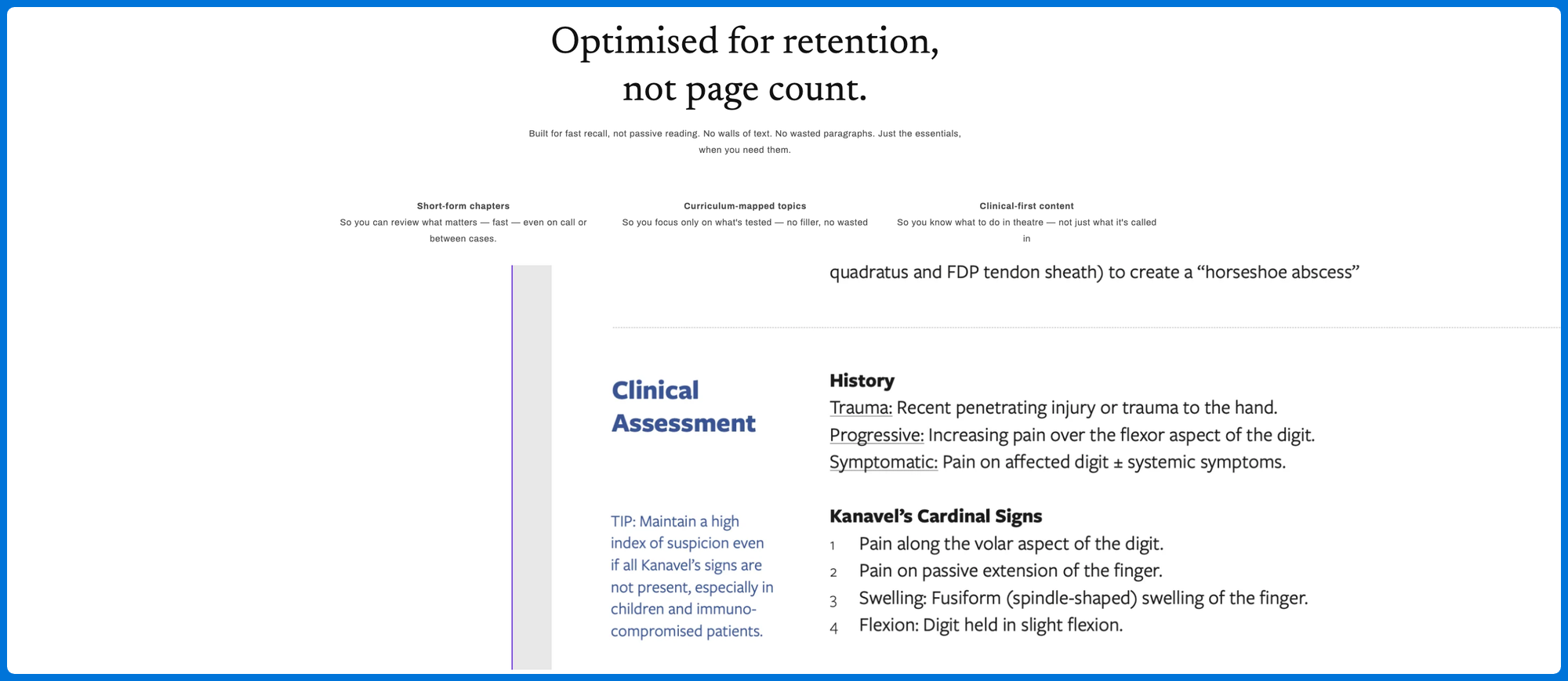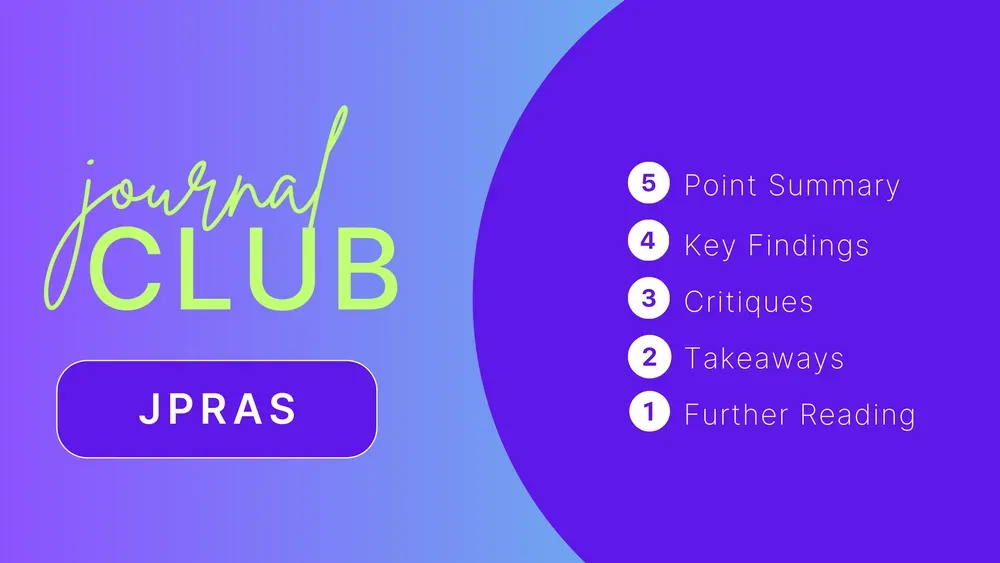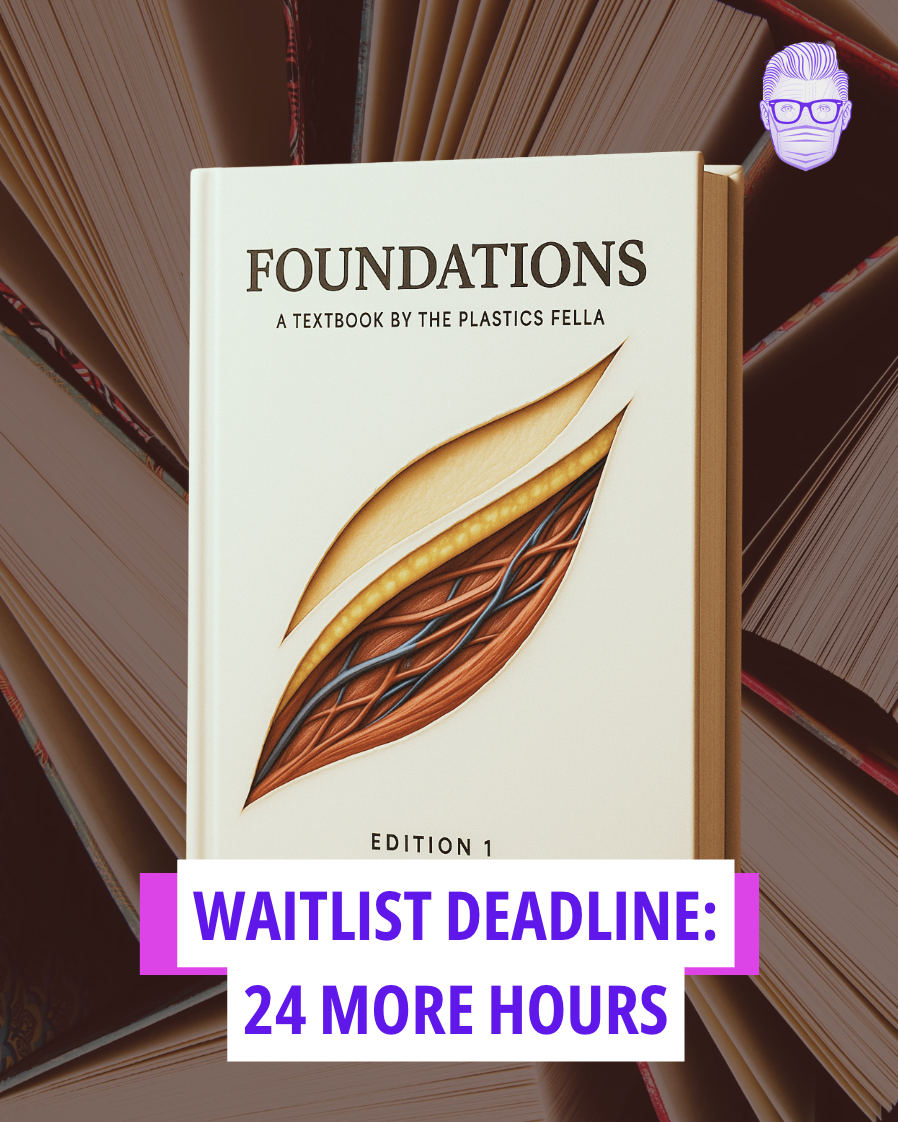In this week's edition
- ✍️ Letter from P'Fella
You Don’t Need More Content. You Need the Right Framework - 🤓 The Sunday Quiz
How well do you know breast ptosis. - 🖼️ Image of the Week
Clinical presentation of BIA-ALCL. - 🚑 Technique Tip
Breast implant placement options. - 🎓 JPRAS Journal Club
Breast implant illness and its comorbid conditions. - 📘 Foundations Textbook
Last call for the waiting list! - 🔥 Articles of the Week
Surgeon awareness of BIA-ALCL, history of breast implants, & choosing breast implants: with 1-sentence summaries. - 💕 Feedback
Suggest ideas & give feedback!
A Letter from P'Fella
You Don’t Need More Content. You Need the Right Framework
Some days, it feels like learning plastic surgery is less about curiosity and more about navigating clutter.
You start off with good intentions. Maybe it’s to revise flaps, brush up on anatomy, or prep for tomorrow’s list. But five minutes in, you’re buried in a maze of half-finished PDFs, conflicting explanations, and lecture recordings with no timestamp on what actually matters.
And no one really teaches you how to make sense of it all. The volume grows. The structure never comes. And somehow, we call this learning.
What Most of Us Are Missing
If you’ve ever felt like you’re working harder than necessary just to get a basic grasp of something, you’re not alone. What’s missing usually isn’t motivation or intelligence...it’s a system.
A clear way of thinking.
A framework that says: this is the core, this is how it connects, and this is where to go next.
What We’re Working On
We’ve been exploring this exact issue for a while now. How to bring order to the chaos without oversimplifying. How to teach the fundamentals without flattening the nuance.
The result is something we’ve been quietly building in the background. A structured way of learning, designed with the same discipline we bring to surgery itself.

No pressure. No hard sell. Just something that might make things a little clearer.
With love,
P Fella ❤️
The Sunday Quiz
How Well Do You Know Implant Ptosis
Join The Weekly Quiz in each edition of thePlasticsPaper. Tackle one question per week for seven rounds!
The top scorer wins a copy of our upcoming textbook, Foundations.
Image of the Week
Clinical Presentation of BIA-ALCL
This week’s image features a classic clinical presentation of BIA-ALCL: A late-onset seroma causing visible asymmetry and swelling in a patient with textured breast implants.
Key points:
1. Most common presentation: delayed peri-implant effusion (typically >1 year post-op).
2. May also present with capsular contracture, mass, or regional lymphadenopathy.
3. Diagnosis requires ultrasound-guided aspiration and CD30-positive, ALK-negative cytology.
Prompt recognition and referral for oncologic assessment and en bloc capsulectomy are crucial.

Technique Tip
Breast Implant Placement Options
This week’s tip breaks down the key differences between subglandular, subfascial, and dual plane breast implant placements, each with distinct clinical pros and cons.
📌 Quick comparison:
1. Subglandular: Simple access, no animation deformity, but higher risk of palpability and capsular contracture.
2. Subfascial: Reduced animation, lower contracture rates vs. subglandular, though technically more demanding.
3. Dual Plane: Optimal lower pole fill and soft tissue coverage, but requires IMF access and greater surgical precision.

JPRAS Journal Club
Breast Implant Illness and Its Comorbid Conditions

Exploring Breast Implant Illness and its Comorbid Conditions: A Systematic Review & Meta-Analysis
Data from a systematic review show that 49% of 7045 patients with breast implants reported symptoms consistent with Breast Implant Illness (BII), most commonly fatigue, joint pain, and brain fog.
Symptom improvement followed by explantation in over half of the cases. Autoimmune, psychiatric, and oncologic comorbidities were frequently observed. Clear diagnosis remains challenging, highlighting the need for patient-centred care, thorough assessment, and shared decision-making.
Foundations Textbook
Last Call for the Waiting List!

Your response to the Foundations waitlist has been amazing, and there are still many of you signing up. So we decided to extend our waitlist closing date to May 26th at 11:59 PM EST. Don't miss out on this final chance to secure early access.
Foundations is designed to be the only textbook that evolves as our field grows. We are here to make a change in medical education and invite you to be a part of it!
This isn’t just about innovation. It’s about necessity. Plastic surgery moves fast. The resources we learn from should too.
Sign up for the waitlist below!
Articles of the Week
3 Interesting Articles with One-Sentence Summaries
Surgeon awareness of BIA-ALCL has driven a shift from macrotextured to smooth implants, with many also reporting changes in patient counseling and greater consideration of autologous reconstruction.
The evolution of breast implants was shaped by innovations in filler and shell design, regulatory interventions, and safety crises, including capsular contracture, PU degradation, PIP fraud, and BIA-ALCL.
Breast implant selection varies widely and is influenced by both evidence and non-clinical factors, including frequent patient-driven deviations, which highlights the need for shared decision making.


